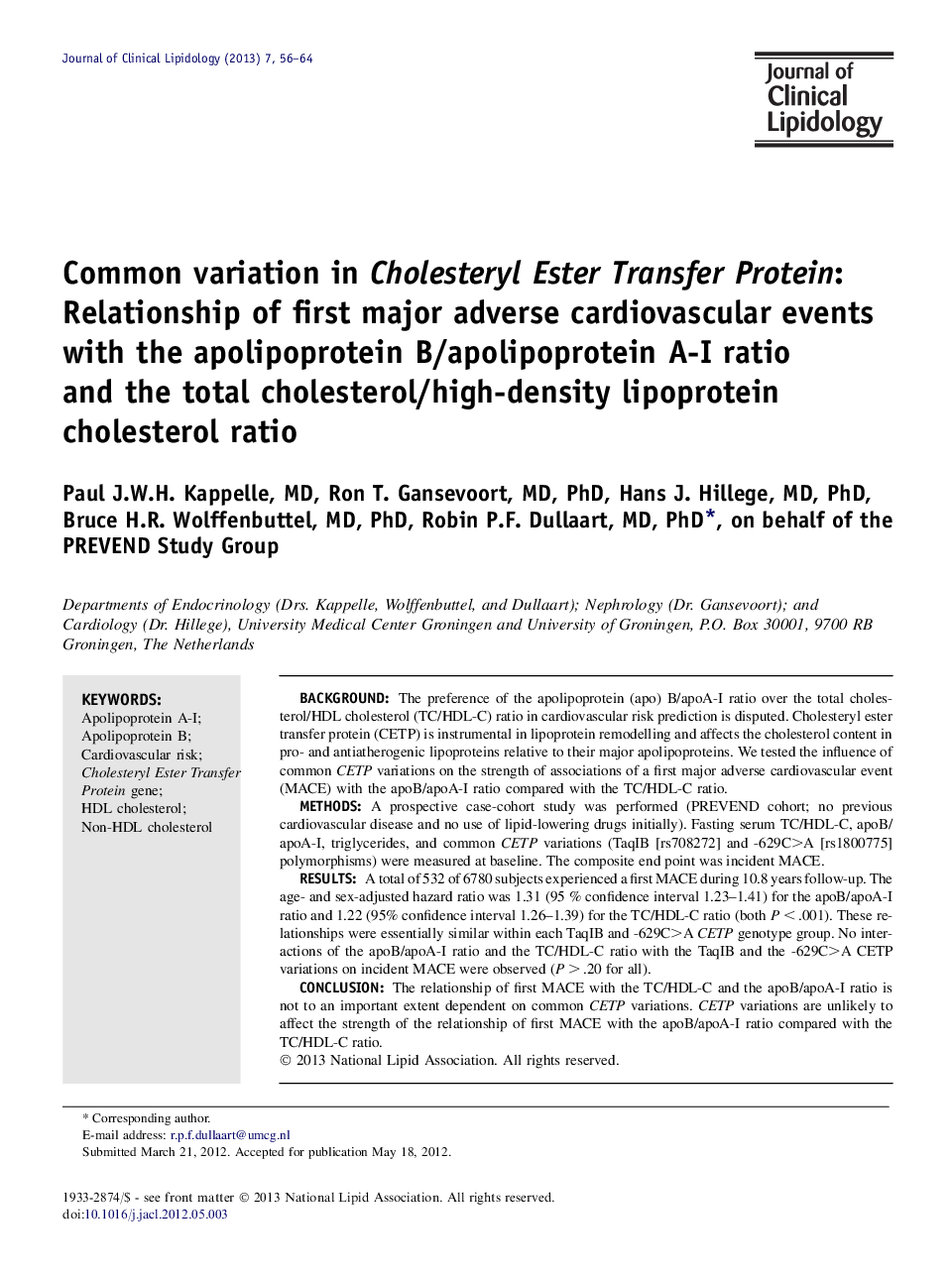| Article ID | Journal | Published Year | Pages | File Type |
|---|---|---|---|---|
| 2966602 | Journal of Clinical Lipidology | 2013 | 9 Pages |
BackgroundThe preference of the apolipoprotein (apo) B/apoA-I ratio over the total cholesterol/HDL cholesterol (TC/HDL-C) ratio in cardiovascular risk prediction is disputed. Cholesteryl ester transfer protein (CETP) is instrumental in lipoprotein remodelling and affects the cholesterol content in pro- and antiatherogenic lipoproteins relative to their major apolipoproteins. We tested the influence of common CETP variations on the strength of associations of a first major adverse cardiovascular event (MACE) with the apoB/apoA-I ratio compared with the TC/HDL-C ratio.MethodsA prospective case-cohort study was performed (PREVEND cohort; no previous cardiovascular disease and no use of lipid-lowering drugs initially). Fasting serum TC/HDL-C, apoB/apoA-I, triglycerides, and common CETP variations (TaqIB [rs708272] and -629C>A [rs1800775] polymorphisms) were measured at baseline. The composite end point was incident MACE.ResultsA total of 532 of 6780 subjects experienced a first MACE during 10.8 years follow-up. The age- and sex-adjusted hazard ratio was 1.31 (95 % confidence interval 1.23–1.41) for the apoB/apoA-I ratio and 1.22 (95% confidence interval 1.26–1.39) for the TC/HDL-C ratio (both P < .001). These relationships were essentially similar within each TaqIB and -629C>A CETP genotype group. No interactions of the apoB/apoA-I ratio and the TC/HDL-C ratio with the TaqIB and the -629C>A CETP variations on incident MACE were observed (P > .20 for all).ConclusionThe relationship of first MACE with the TC/HDL-C and the apoB/apoA-I ratio is not to an important extent dependent on common CETP variations. CETP variations are unlikely to affect the strength of the relationship of first MACE with the apoB/apoA-I ratio compared with the TC/HDL-C ratio.
